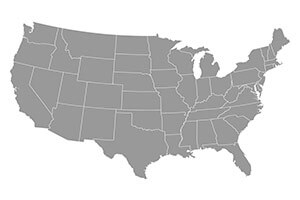
It was an abnormal 2020, to say the least. While regular folks dealt with shortages of toilet paper and hand sanitizer, beekeepers had difficulty finding … just about everything, as honey consumers (and canners) cleaned stores out of honey jars and newly-homebound workers discovered beekeeping and flooded suppliers with orders. Here’s hoping 2021 brings some degree of normalcy.
Northeast
In Pennsylvania, demand continues high for local honey, with small retailers doing an excellent business and wholesale product selling well. Most hives had adequate stores heading into winter.
A New York beekeeper began offering private label honey to landowners hosting his bees, significantly increasing sales in the process. The 2020 crop was below average, but colonies mostly looked good in November.
New Hampshire colonies were in fair condition heading into winter. The drought that reduced honey production will increase the need for winter feed and likely increase winter mortality. Meanwhile, the pandemic continues to prop up retail demand for what local honey is available.
It was a very dry year in Maine as well, causing a poor year for honey production, and necessitating feeding of colonies going into winter. Retail customers continue to demand “pure and natural” lcoal honey.
Mideast
Virginia saw a better crop overall than in 2019, and winter colonies are mostly in good condition. Demand for local honey has not subsided.
Kentucky’s honey crop was down this year, and much local honey is sold out. Many beekeepers in eastern KY and southwest VA have been feeding since early fall, though the late aster flow helped out. Some queens even shut down due to lack of incoming pollen. Beekeepers who were not proactive during the drought may take heavy winter losses.
Southeast
”Brazilian pepper was the only normal crop” on the west coast of Florida, with orange blossom and palmetto/gallberry well below average. In Jacksonville vending machines are now being used to sell honey. Colonies were in fair shape in November.
Alabama colonies look good, with adequate winter stores. Retail honey sales continue strong.
Southwest
Louisiana saw higher than normal October rainfall, which brought soil moisture up to about normal after a drought year. Retail sales continue strong.
It was a bad year for hive beetles in Texas, contributing to higher-than-normal summer losses. Retail sales have been hurt by closed farmers markets and cancellation of fall festivals, but some ground has been made up by direct-to-consumer sales and demand from mead-makers. Shortages of plastic bottles and the high cost of glass (up 100-150% over three years) have cut into profit margins.
East Central
Glassware (specifically canning jars) is also in short supply in Wisconsin, with some suppliers taking orders six months in advance. Record-breaking cold in late October shut down broodrearing (and fall feeding and mite control), but a record-breaking warm spell in November allowed both bees and their keepers to catch up. (It was as if “spring had arrived in November,” with maple and dandelion pollen coming in.)
Illinois reported cold, windy weather and even a bit of snow in late October, and fall honey crops were not good. Honey demand has been good, with comb honey making a resurgence.
“Honey is selling briskly” in Indiana. October was warm, with quite a bit of rainfall late in the month. Most colonies are in good winter condition.
West Central
The pandemic continues to drive demand higher in Kansas. Colonies are looking good overall this winter, with little feeding necessary. Strong demand is expected for spring packages, nucs and queens.
Demand for retail and wholesale honey also continue strong in the Dakotas. Winter stores were good, with most colonies heading to warmer climes for winter.
Missouri saw a dropoff in production as spring’s bumper crops gave way to summer and fall drought. Colonies in some areas required heavy feeding in fall. Demand for local honey continues strong.
Intermountain
Weather was warm and dry in Idaho and Utah, while Colorado was cooler and wetter. Colonies in all three states for the most part required signifant fall feeding.
Nevada’s colonies mostly looked good going into winter, with adequate stores. Honey prices have been up due to increased demand.
West
Warm September weather in Washington allowed beekeepers to make preparations for winter before a late October cold spell shut most activity down. ….


